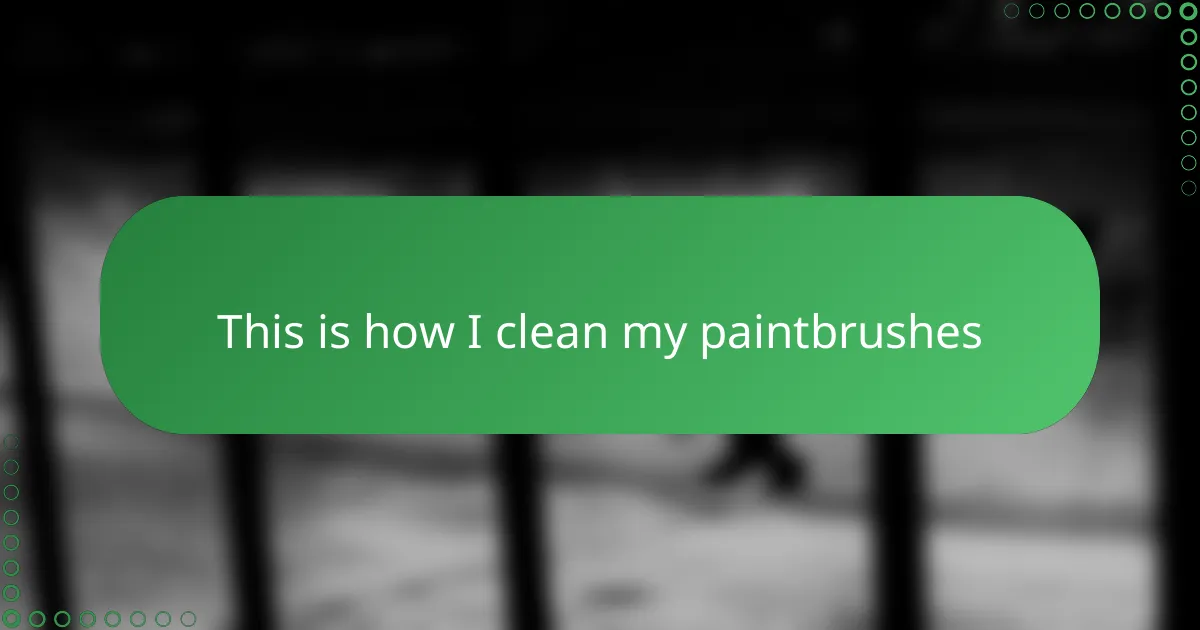Key takeaways
- Handmade paper crafts offer unique textures and individuality, enhancing creativity and artistic expression.
- Essential tools like quality cutting blades, adhesives, and different paintbrushes significantly improve the paper crafting experience.
- Regular cleaning and proper maintenance of paintbrushes are crucial for preserving their quality and functionality for detailed work.
- Adopting good storage practices helps extend the lifespan of paintbrushes and ensures they remain in optimal condition for future projects.

Understanding handmade paper crafts
Handmade paper crafts have always fascinated me because they bring such a unique texture and warmth that machine-made paper just can’t match. Have you ever noticed how each sheet carries its own subtle imperfections, almost like a fingerprint? It’s this individuality that makes working with handmade paper so rewarding.
When you dive into creating with handmade paper, you’re not just crafting an object; you’re connecting with a tradition that values patience and authenticity. I find this deeply satisfying—it’s a gentle reminder to slow down and appreciate the simple beauty in the little things.
What really strikes me is how versatile handmade paper can be, especially in craft projects. Whether you’re making cards, journals, or art prints, it adds a richness that transforms ordinary creations into something truly special. Have you experienced that moment when your art feels more alive simply because of the materials you chose? That’s the magic of handmade paper.
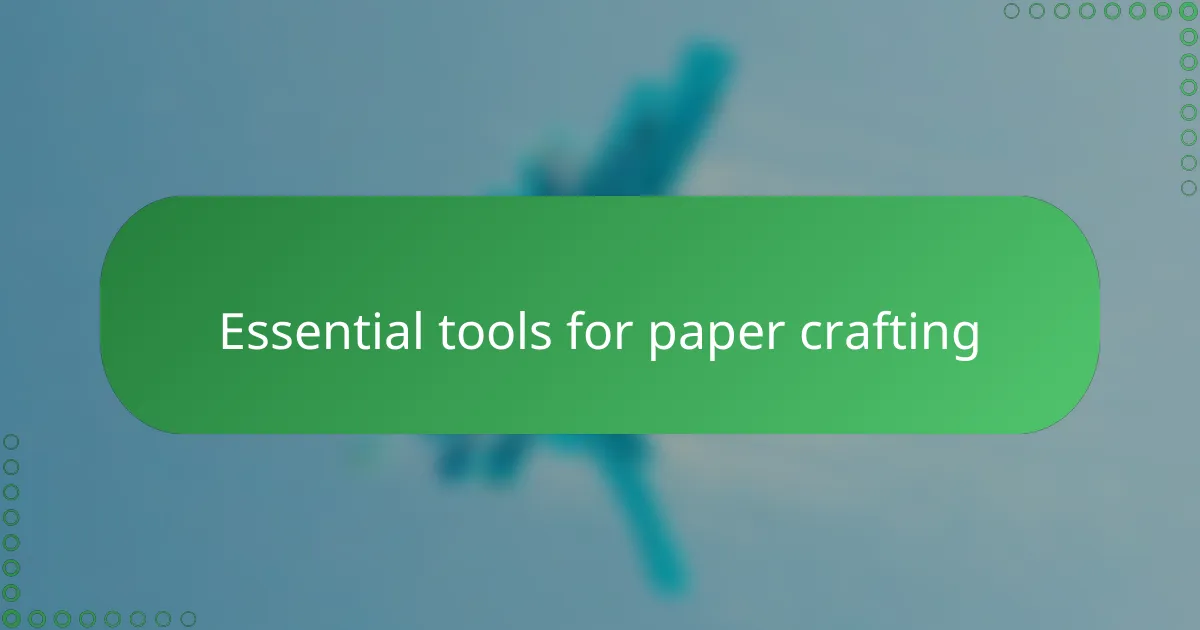
Essential tools for paper crafting
When I first started paper crafting, I quickly realized that having the right tools makes all the difference. Essential items like sharp cutting blades and quality adhesives are my go-to companions; they help me transform delicate sheets of handmade paper without tearing or smudging. Have you ever tried gluing a piece only to have it warp or wrinkle? Trust me, the right adhesive saves you from that frustration.
Another tool I rely on is a sturdy cutting mat—it protects my surfaces and provides a smooth base to work on. Over time, I’ve learned that investing in a metal ruler with a non-slip grip is a game-changer for making precise cuts, especially when working with textured handmade paper. Do you know that satisfying sound when the blade smoothly slices through paper? That’s the feeling of control and accuracy I aim for every time.
And of course, paintbrushes play an essential role when I add color or detail to my projects. Keeping them clean and well-maintained is part of my routine because a good brush ensures the paint goes on smoothly without streaks. What’s your experience with tools in paper crafting? I find that when I care for my tools, my art benefits greatly from that attention to detail.
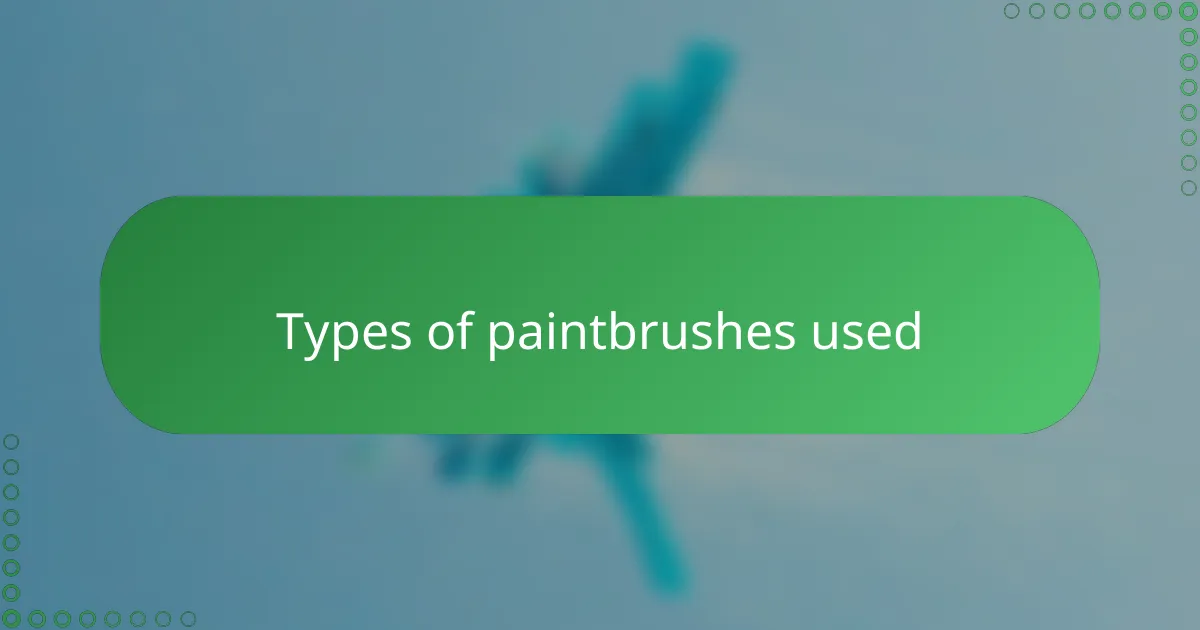
Types of paintbrushes used
I tend to reach for round brushes when I want precision, especially for fine details or delicate lines on my paper crafts. There’s something satisfying about how the pointed tip allows me to control every tiny stroke—have you ever noticed how a good round brush feels almost like an extension of your hand?
Flat brushes are another favorite because they cover larger areas quickly, which is a real time-saver when applying washes or backgrounds. I always appreciate how the broad edge helps me achieve smooth, even strokes without overworking the paper, preserving that beautiful handmade texture.
Then there are fan brushes, which I don’t use as often but still love for adding subtle texture or blending colors softly. Using one feels like painting with a whisper, and I find it perfect when I want to create that gentle, organic feel that complements handmade paper so well. Have you tried them yet? They might surprise you.
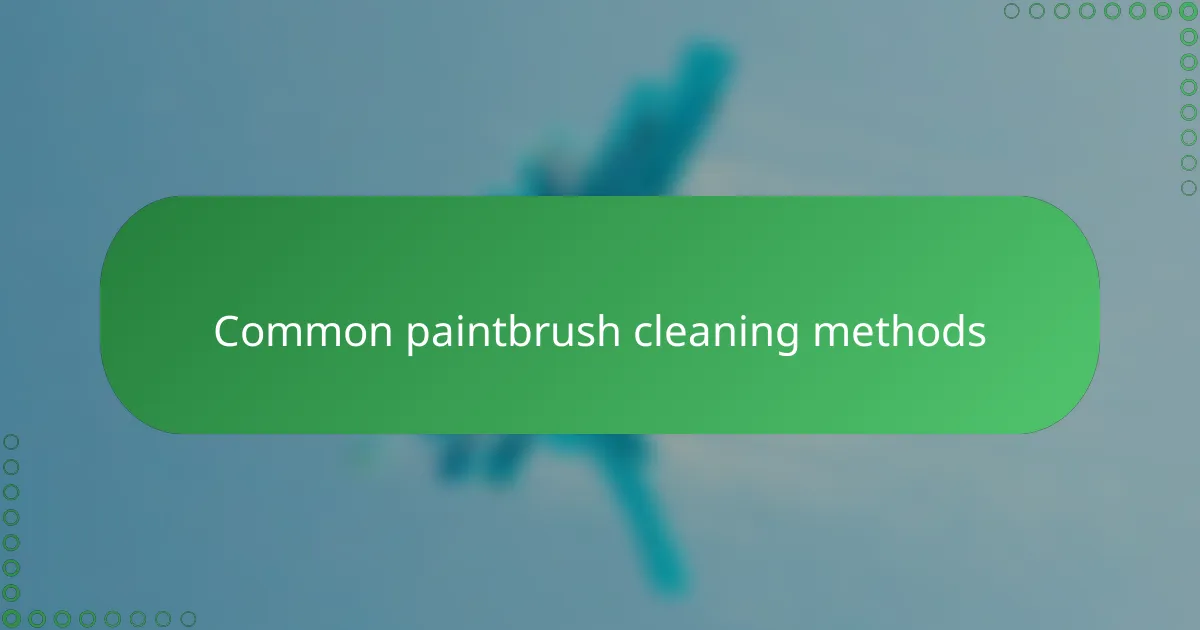
Common paintbrush cleaning methods
When it comes to cleaning paintbrushes, the most common method I use is simply rinsing them immediately after painting with warm water. It’s amazing how much easier it is to remove paint when it hasn’t had time to dry and harden. Have you ever waited too long and then struggled to get your brush clean? I certainly have, and it’s frustrating to see those bristles stiffen and lose their shape.
Soap and water is another staple in my cleaning routine. I usually massage a gentle soap into the bristles, working from the ferrule (that’s the metal part holding the bristles) down to the tips. This method feels thorough to me, especially after using acrylic paints that tend to cling stubbornly. I find it satisfying when the water runs clear, signaling that the brush is truly clean and ready for another round.
For oil-based paints, I’ve learned that using a solvent like mineral spirits or brush cleaner is unavoidable. Early on, I was hesitant because I worried about the harsh chemicals, but with proper ventilation and gloves, it’s quite manageable. Have you used solvents before? They’re a game-changer for restoring brushes without damaging the bristles, keeping them supple and reliable for all those detailed paper craft designs.
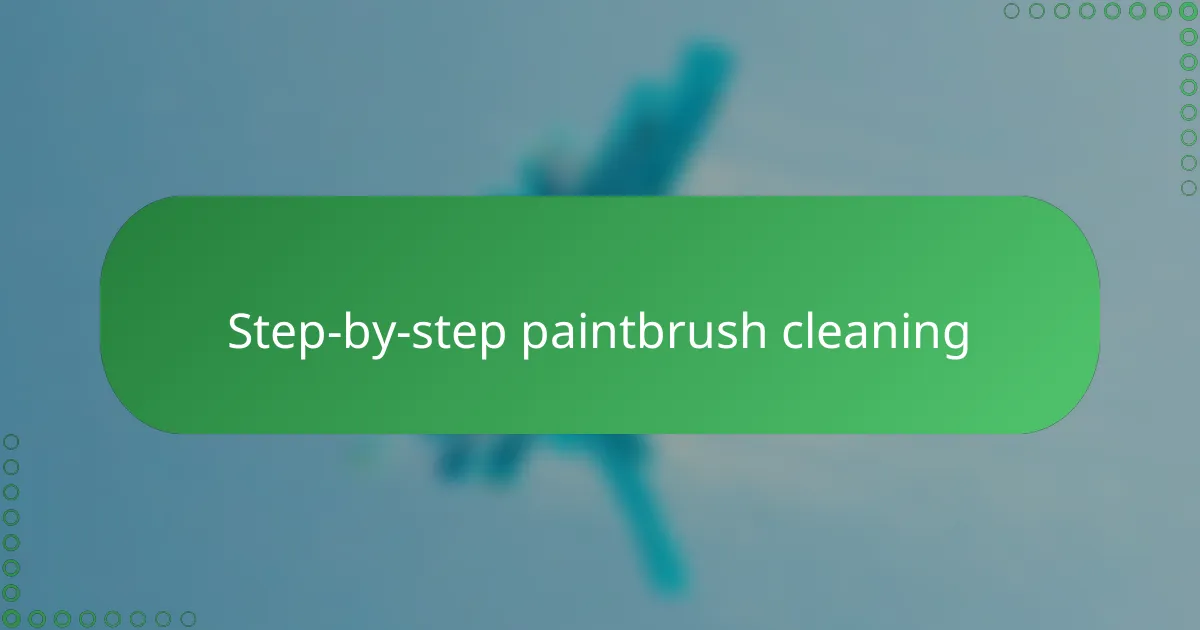
Step-by-step paintbrush cleaning
The very first thing I do is rinse my brush under warm running water right after I’ve finished painting. It’s incredible how much paint just washes away when you catch it early—have you noticed how stubborn dried paint can be? Waiting only makes the cleaning harder and the bristles stiffer, so I’ve learned to act fast.
Next, I take a gentle soap—usually a mild dish detergent—and work it carefully into the bristles with my fingers, moving from the metal ferrule down to the tips. This step always feels like a mini massage for my brush, and I really enjoy that moment of seeing the colors rinse away until the water runs perfectly clear. Don’t you find that satisfying, almost like the brush is ready for a fresh start?
For oil paints, I can’t skip the solvent step. At first, I felt uneasy using mineral spirits, but now I do it confidently with gloves and good ventilation. It’s reassuring to know that this deep cleaning keeps my brushes soft and dependable for all those delicate strokes on my handmade paper projects. Have you ever tried this? It really saved my favorite brushes from becoming stiff and unusable.
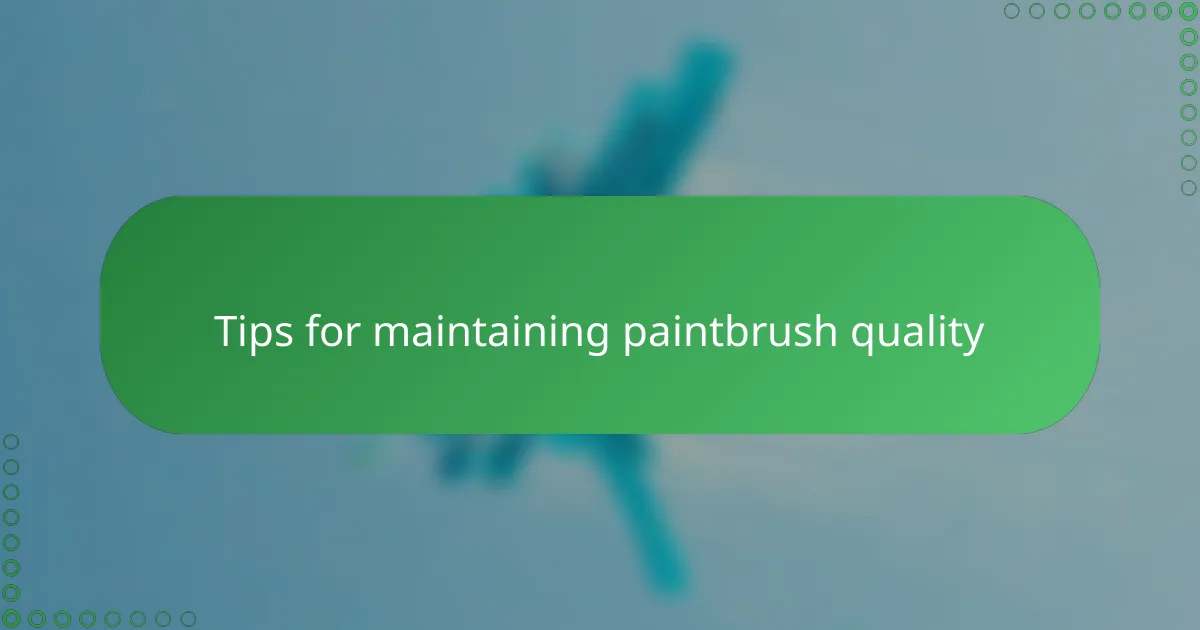
Tips for maintaining paintbrush quality
One thing I’ve learned over the years is that never letting paint dry on the bristles is key. Have you ever tried scrubbing a brush that’s been left too long? It feels like wrestling with a stubborn mess, and the bristles just won’t recover their spring. So, catching that paint early keeps the brush happy and responsive.
Another trick I swear by is reshaping the bristles gently after every cleaning. It feels almost like tucking in my brush for the night, helping it maintain its original form. Without this small habit, I’ve noticed brushes tend to flair out or lose their fine point, which makes precision work on handmade paper much harder.
Also, storing brushes properly can make a world of difference. I avoid leaving them standing bristle-down in a jar, which can bend or damage those delicate hairs. Instead, I lay mine flat or hang them with bristles pointing downward to preserve their shape and keep them ready for the next creative session. Have you tried this simple step? It really extends the life of your favorite brushes.
